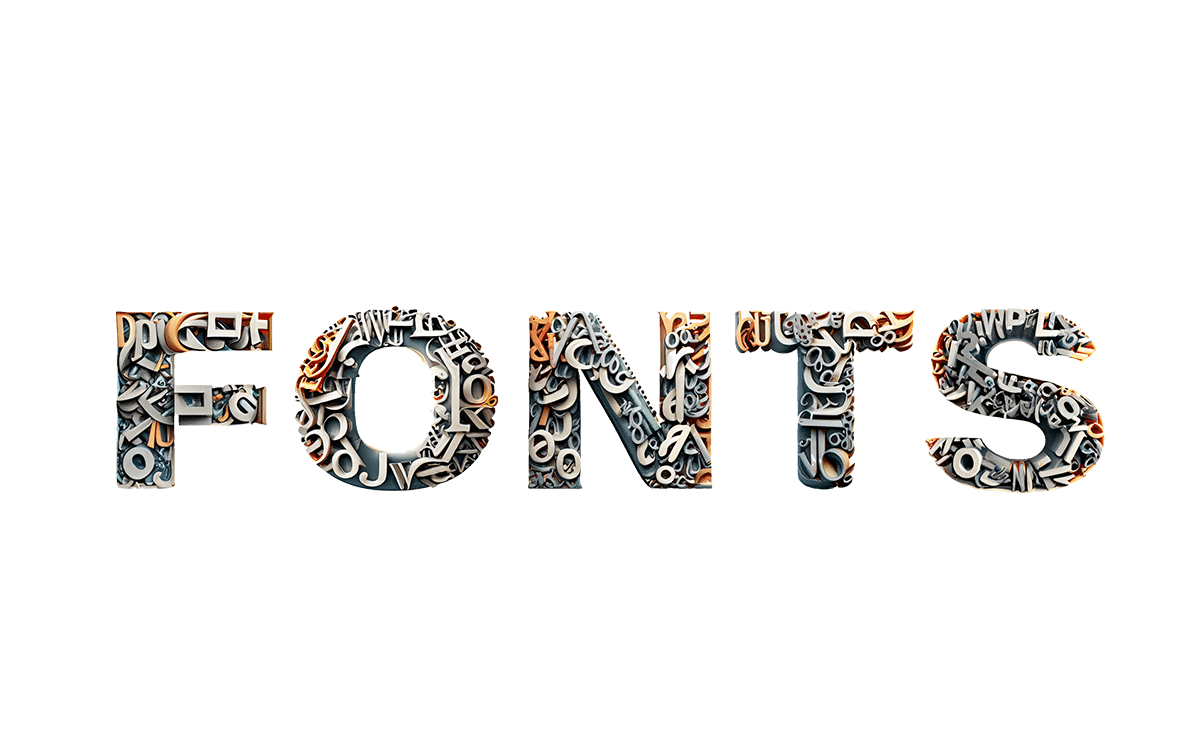When planning a video, fonts might be the last thing on your mind. It might seem more important to tell a compelling story or design engaging characters. Those elements certainly are essential, but don’t underestimate fonts in video. Fail to think about them and audiences may miss your message. Worse, you could end up in legal trouble.
We’ll show you how to choose the right fonts, navigate copyright concerns, and put a professional shine on your videos. But first we need to get one thing straight…
Fonts Vs. Typefaces: Is there a difference?
People tend to use the word font for anything related to the shape or form of the text. In most cases, typeface is a word that only professional designers use. Designers will tell you that a typeface is a category and a font is a variation within that category. The fonts belonging to a typeface are sometimes called a “typeface family.”
On the other hand, lawyers will tell you that a typeface is the way the set of letters or numbers appears, while the font is the computer program that displays that character.
To further complicate things, typefaces can be organized into broad categories, serif vs. sans serif, for example, or blackletter vs modern serif. Fortunately, the average person doesn’t have to understand all the terminology. You just need to be able to pick fonts that are easy to read and match your brand style.
This matters when you start talking about brand guidelines. You might designate a certain size or weight of the typeface—that is, a specific font—that your brand will use.
Branding Guidelines As Applied to Fonts in Video
You probably have a brand guide or style guide that outlines how your logo will be used, what colors represent your brand, and other important details. Most include a topography section that identifies the typefaces and fonts, or typeface family, used by your brand.
You might think you could just use the same typefaces for video, but think again. Text in video just looks different from what is used in a still image or brochure. A font that’s easy to read on your website might be impossible to decode in the background of a video.
By all means, share your brand guide with your video creation company. They can use it as a starting point to help you develop video branding guidelines that will help your brand shine.
Fonts, Typefaces and Copyright
Typefaces and fonts aren’t natural occurrences. Someone has to design them. And just like any other piece of creative output, they come with an end user license agreement. Just as you have to license the use of images, video clips and music, you also need permission to use certain fonts.
The 1976 Copyright Act in the U.S. excluded typefaces as a protected category, meaning that they were not protected under the law. But remember that earlier definition of a font as a type of software? It’s about to become important. In 1992, the U.S. Copyright Office started granting copyrights to font programs. Then a court ruling in favor of Adobe made copyright protection for fonts commonplace.
Today, things are a bit murky. Most companies and individual designers don’t enforce font copyright. But they could. Unlike trademarks, you can’t lose a copyright by failing to defend it. At least, not in the U.S. A copyright holder could decide to defend their rights at any time.
The Million Dollar Question: Can You Use this Font in Video?
To know whether you can use a font, check the End User License Agreement. They may grant you commercial, personal, or other rights. If you buy a font for one purpose, it may not necessarily be used in a different situation.
Many design tools solve this problem for users by offering blanket EULAs. For example, Adobe Premiere comes with a variety of built in fonts. The Adobe Creative Cloud has even more. Adobe says that all of its fonts are cleared for personal and commercial use. So you can use any font from the Adobe Fonts library for logos, videos, and even products you plan to sell.
That covers one of the most popular editors in use today. But what about other video editing tools? The general consensus on Apple Support forums is that fonts in Final Cut Pro can be used commercially, but Apple has made no specific announcement confirming that.
More entry-level software, like Canva, also offers you a broad commercial license to use their fonts in your designs. There are 50 free fonts for the free version and an additional library of fonts in the pro version. Both types can be used commercially as long as they are part of a larger design.
If you’re buying a font from a third party, and loading it into your video editing software, make sure you check the EULA. When in doubt, ask for clarification from the company that provided access to the font.
Avoiding the Copyright Question for Fonts in Video
One way to avoid the copyright question entirely is to use animation. Hand lettered text or customized fonts can be created as part of the animation process.
To start creating your next video, contact the video experts at IdeaRocket.




